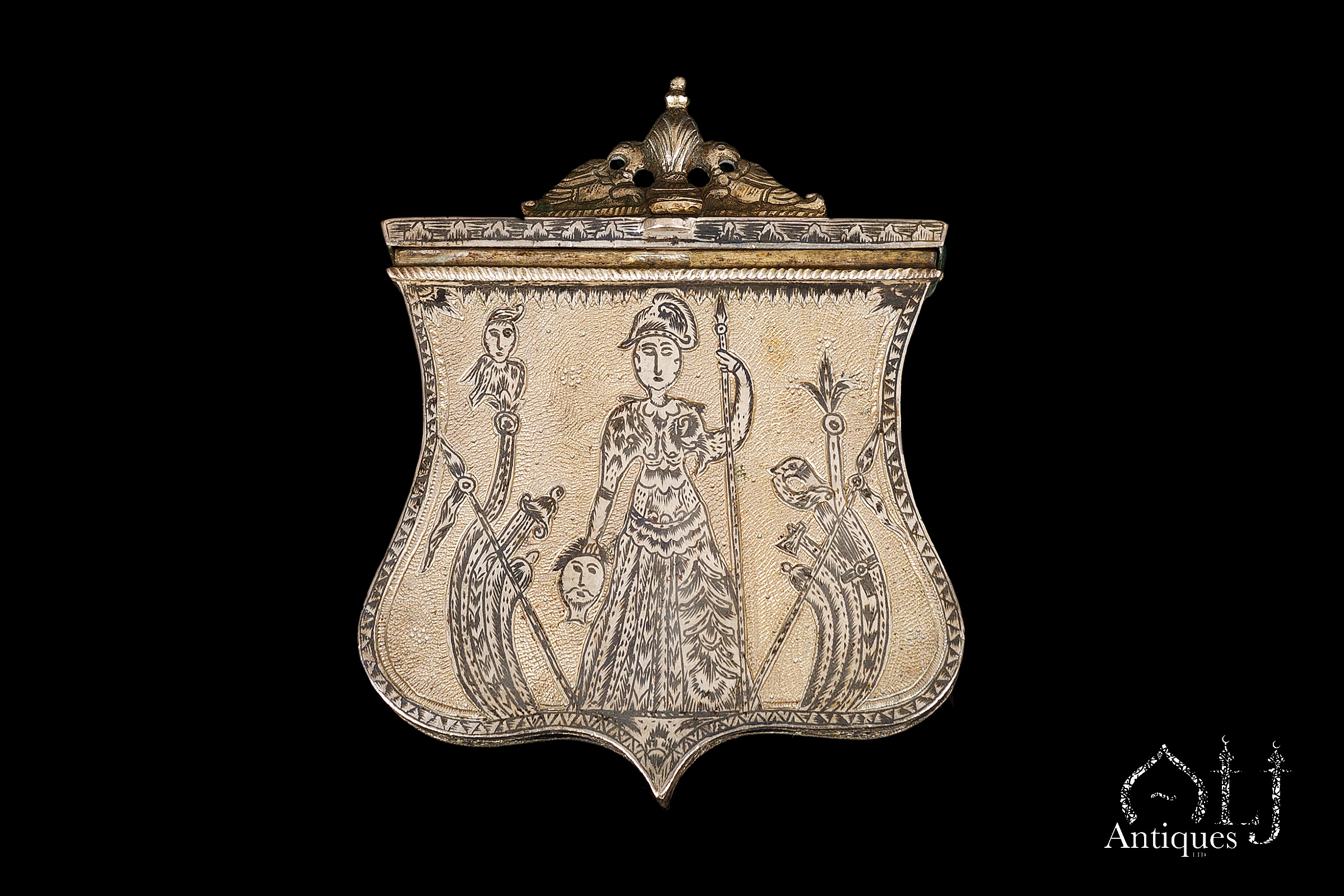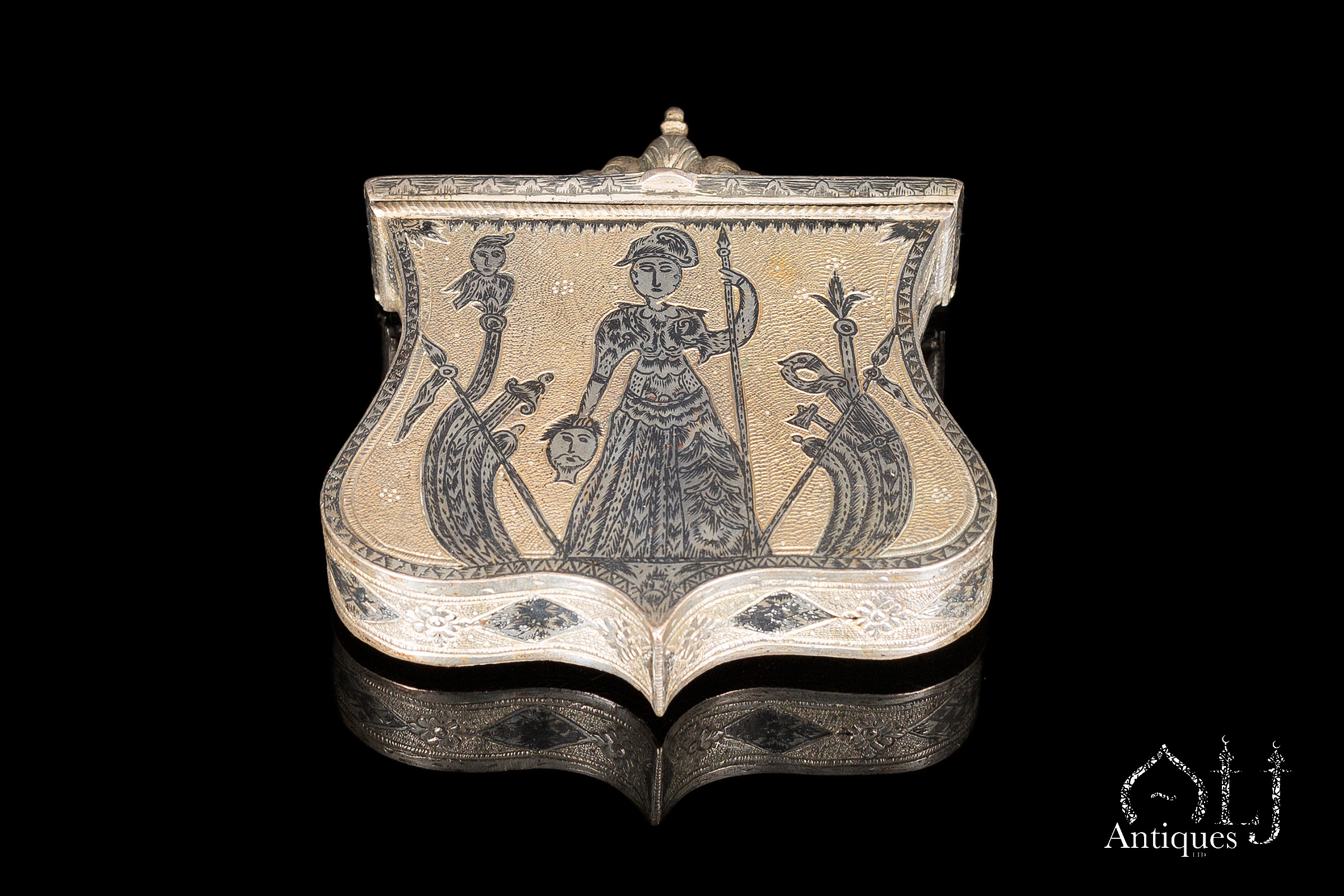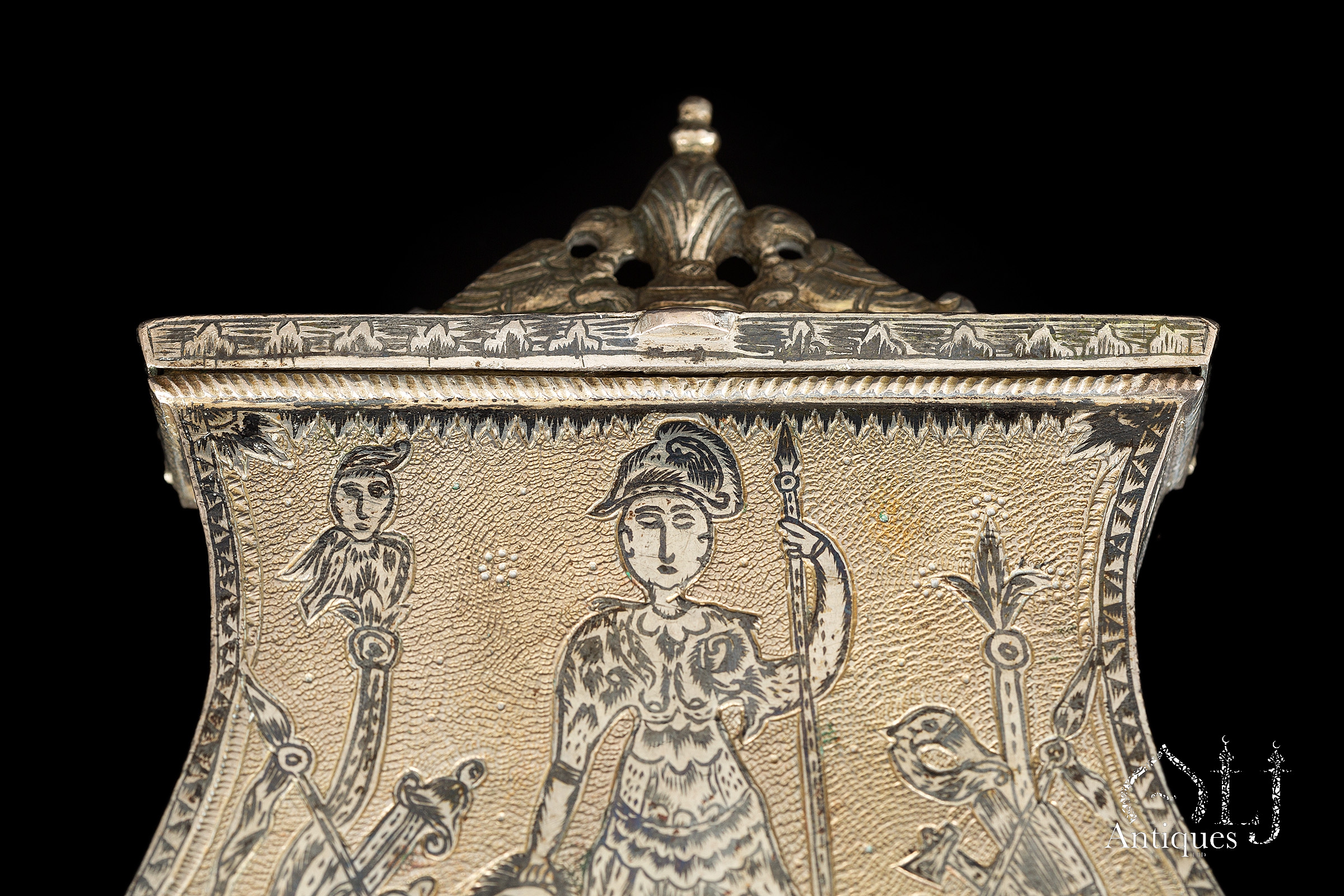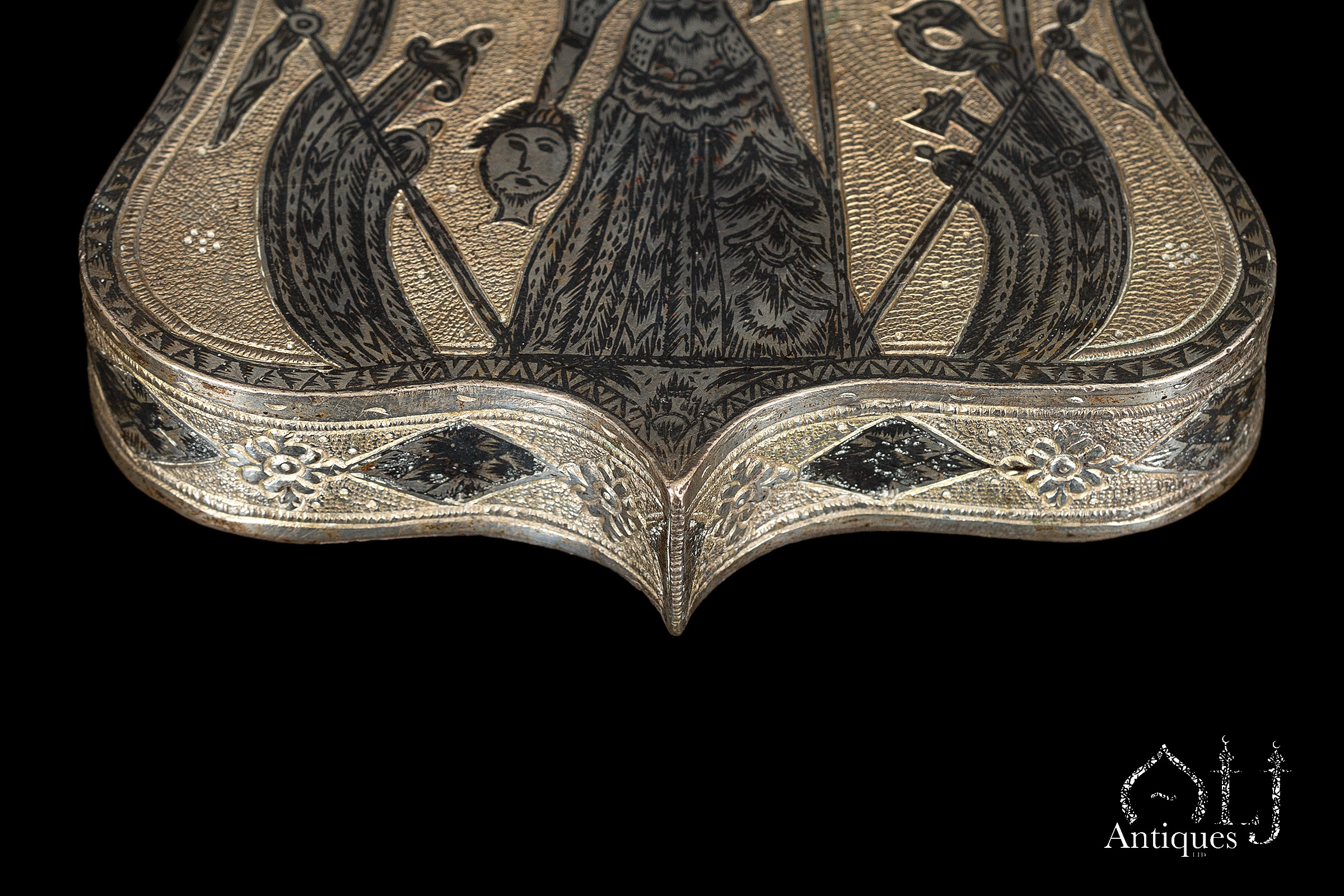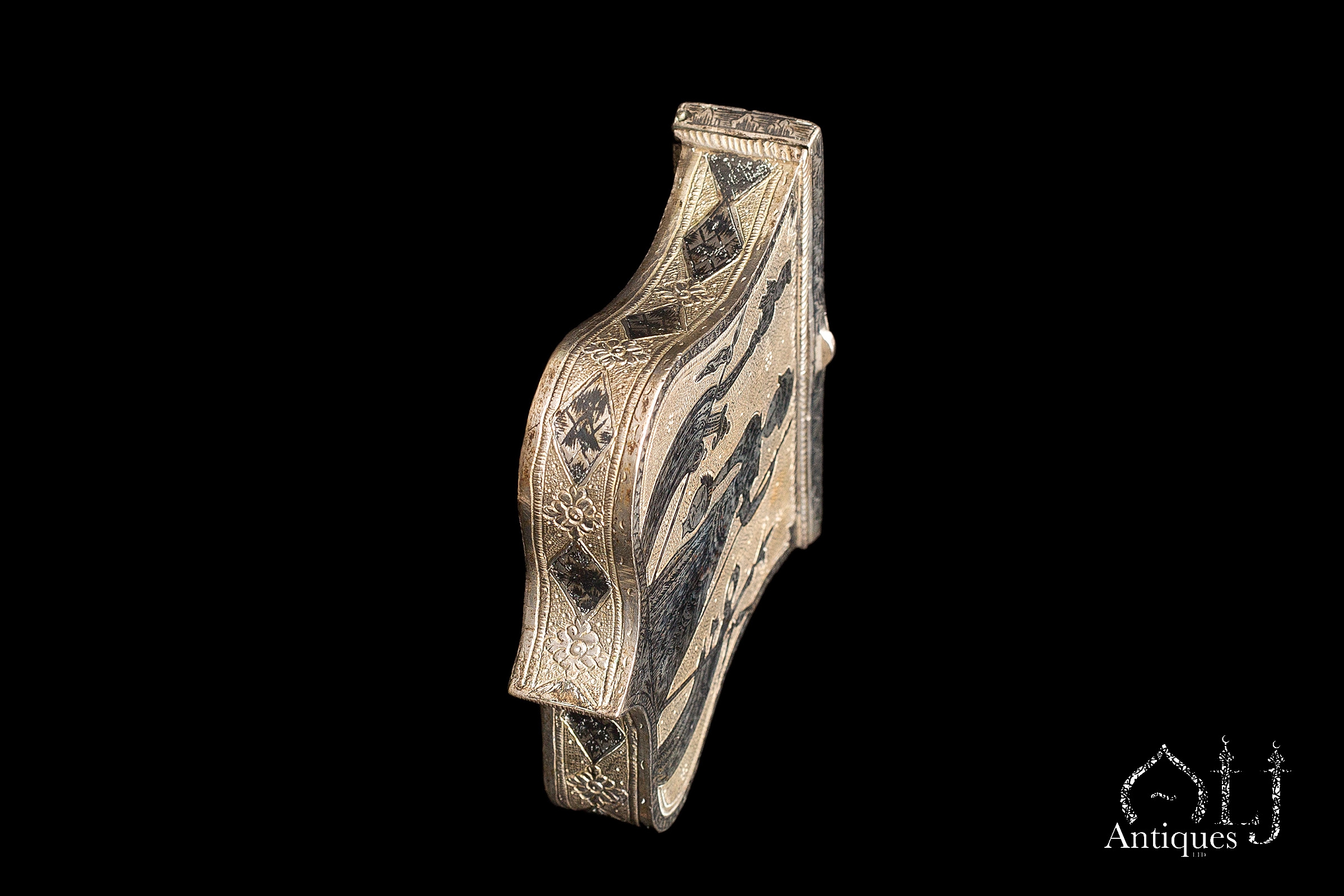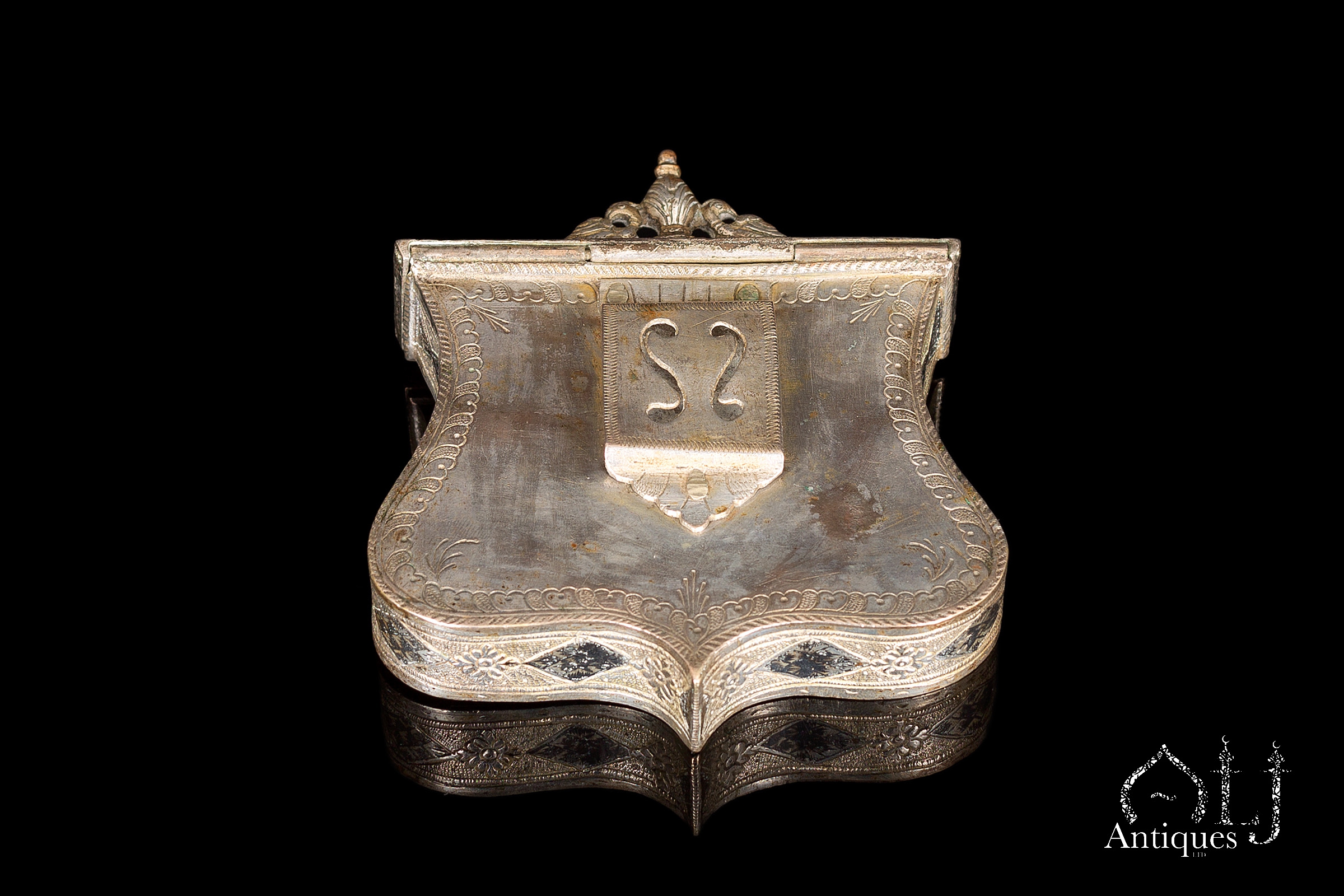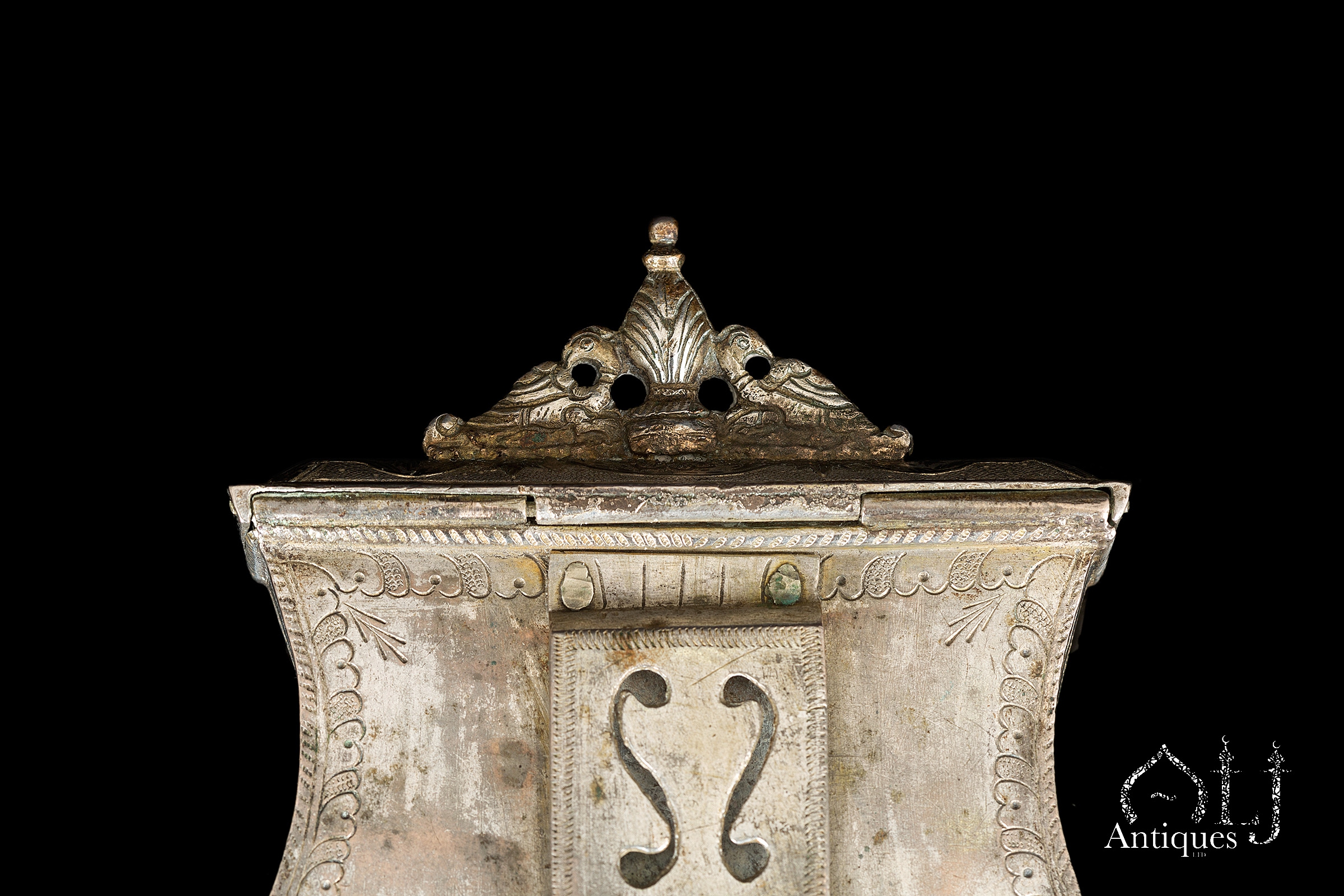Description
This cartridge box is a fine and early example of a Greek palaska.
These items are usually oblong or square pouches, were made of silver, gold, copper, brass or less noble materials such as leather or cloth.
Palaskas were typically worn on a belt and in pairs.
The designs vary according to local styles and traditions— but it important to notice that scholars maintain that published information on these items is often too nationalistic to be reliable.
These boxes were used to store gunpowder, a very precious and expensive material that became a huge commodity for Greek liberal movements during the Liberation War (1821–1829).
The subject Christians living under the rule of the Ottoman Empire were forbidden to wear them in public and it is safe to assume that the large corpus of these pieces date to the liberation struggle.
While most of silverware from the Ottoman provinces were strictly non-figural following Muslim standards, silversmiths from Greece favoured ecclesiastical scenes with wild animals and saints—indeed, the scenes and symbols used were usually apotropaic, as they were meant to ward off against the evil eye.
Nevertheless, by the 19th century the rise of high-level social population raised in the Ottoman Empire, this was paralleled by an increasing desire for secular themes such as those originating from the Greco-Roman world.
Many pieces with classical motifs can be seen in the Notaras Collection (Korrhe-Zografou, Chrysikon Erga).
In this example, the lid is surmounted with open-work panel which shows two phoenixes separated by a vase or mitre.
The back of the box comprises a thick, plain silver plate with a belt loop attached.
At the front the image of the goddess Athena appears dressed in classical tunic and placed between two flags, on her right hand side she holds a severed head, often associated with the Gorgon Medusa—however the head here has masculine features and is probably a representation of the enemies of the Greek nation.
This image was very popular during the time of resurgent Greece.
The Greek saw this allegory as a representation of the reborn of Greece, which is portrayed as the goddess in her avatar of “Hellas”, these models also appear to have been taken from a simultaneous interest in contemporary western engravings that arrived to the Ottoman Empire during the 18th century and later, usually with classical and mythological themes.
By the end of the eighteenth century and beginning of the nineteenth, the empire was under the splendour of the neoclassical cultural influence.
The Greek clientele were actively commissioning decorated objects with mythological scenes, however behind the classicizing figures lay an internal interest in cultural ideology and claims for national identity: the Greek nation as heirs the Hellenic Classical past and the Byzantine Empire.
This particular example is made in gilt silver, worked with niello technique, a tradition known in Greece since antiquity.
Nielloware saw a revival in the early 18th century, and flourished in the region in the 19th century, particularly through trade with the Armenian community who were commercialising their niello-ware from the Arminian city of Van several examples of nielloed palaskas are kept in the Notaras Collection in Athens (Korrhe-Zografou, Chrysikon Erga).
References:-
Katerina Korrhe-Zografou, Chrysikon erga 1600-1900, Helleniko Logotechniko kai Istoriko Archeio (E.L.I.A.), 2002.
Robert Elgood, The Arms of Greece and Her Balkan Neighbours in the Ottoman Period, Thames & Hudson, 2009.
Angelos Delēvorrias, From Byzantium to modern Greece: Hellenic art in adversity, 1453-1830 : from the collections of the Benaki Museum, Athens, Alexander S. Onassis Public Benefit Foundation ; Athens : Benaki Museum, 2005.
For similar pieces see:
The Silversmithing Museum, Ioannina.
Elgood, The Arms of Greece, Niello palaska with Athena, item 134.
Elgood, The Arms of Greece, Niello palaska, item 137.
Peloponnesian Folklore Foundation “Vasileios Papantoniou”, Silver Palaska, ai. 1976.1.1.
Korrhe-Zografou, Chrysikon erga (Konstantinos Notaras Collection), Pi1-Pi8.

